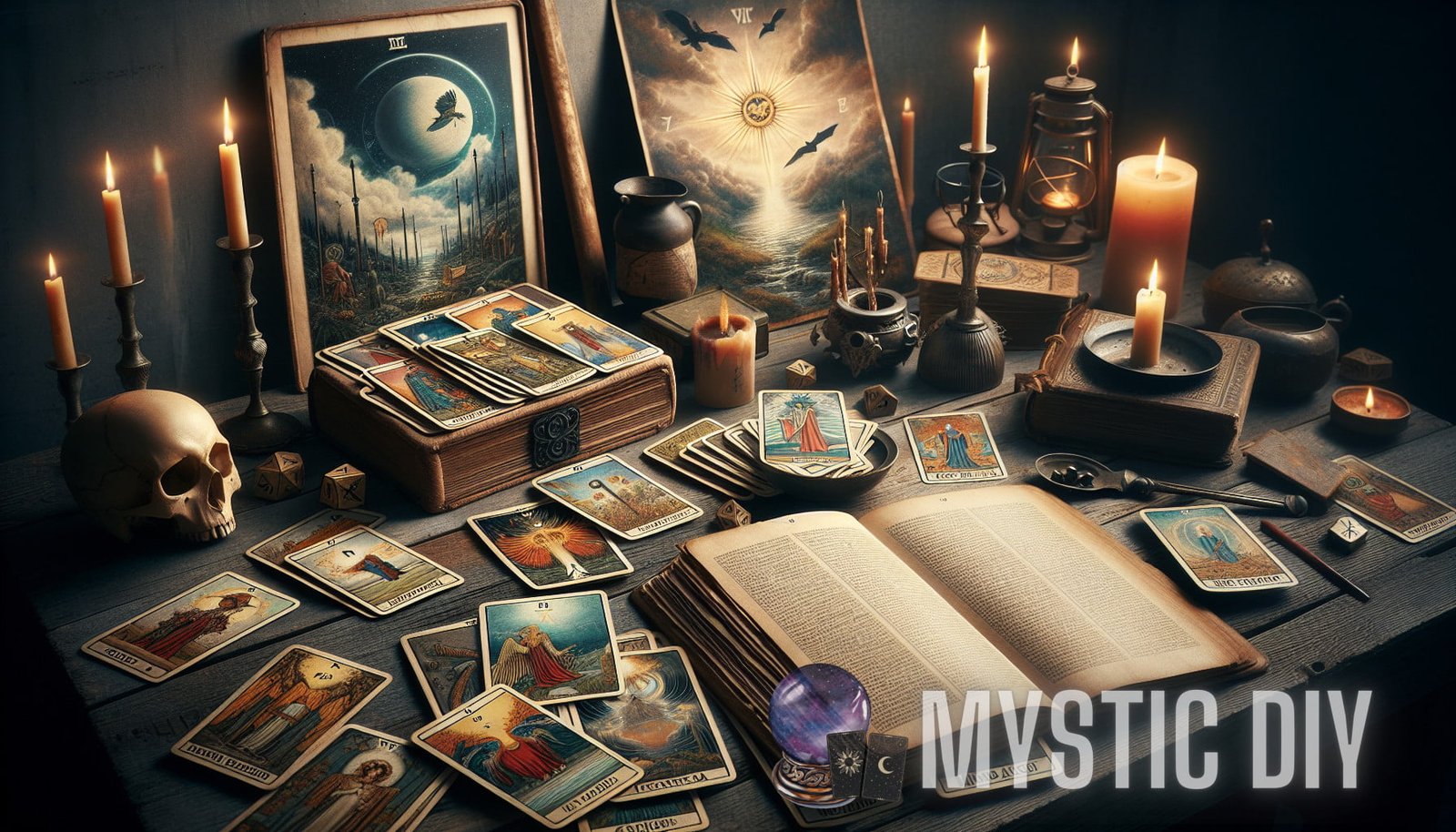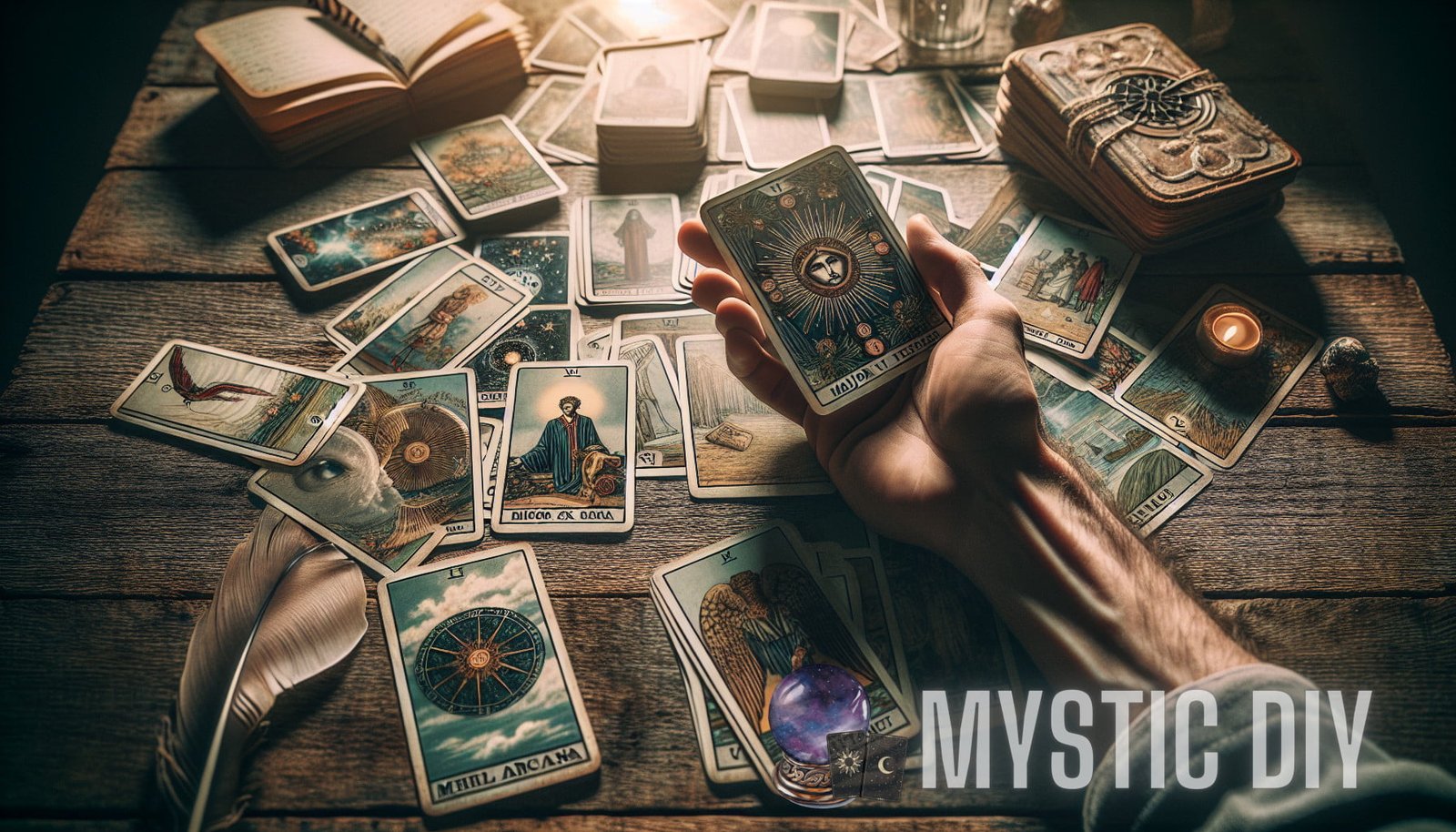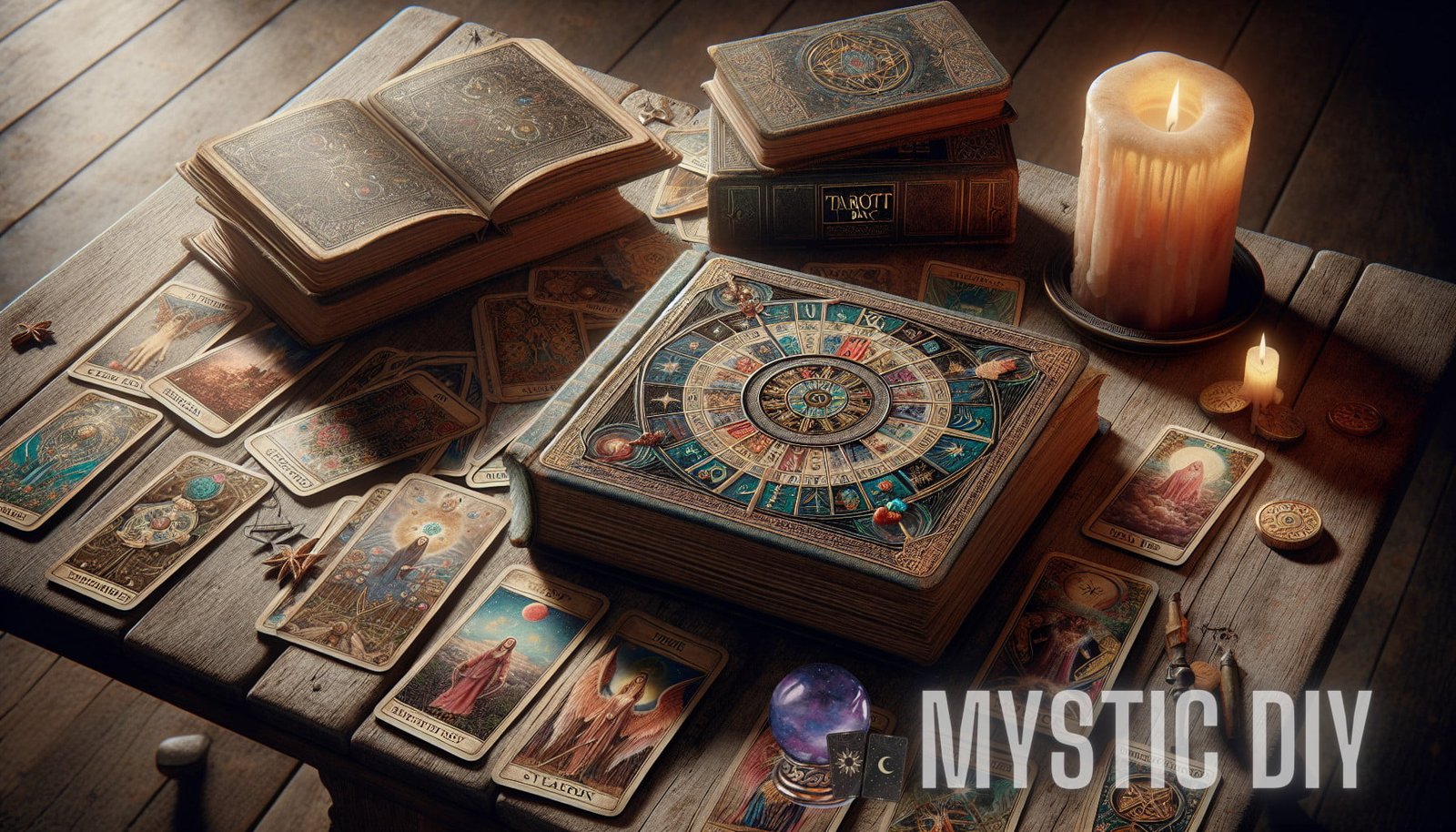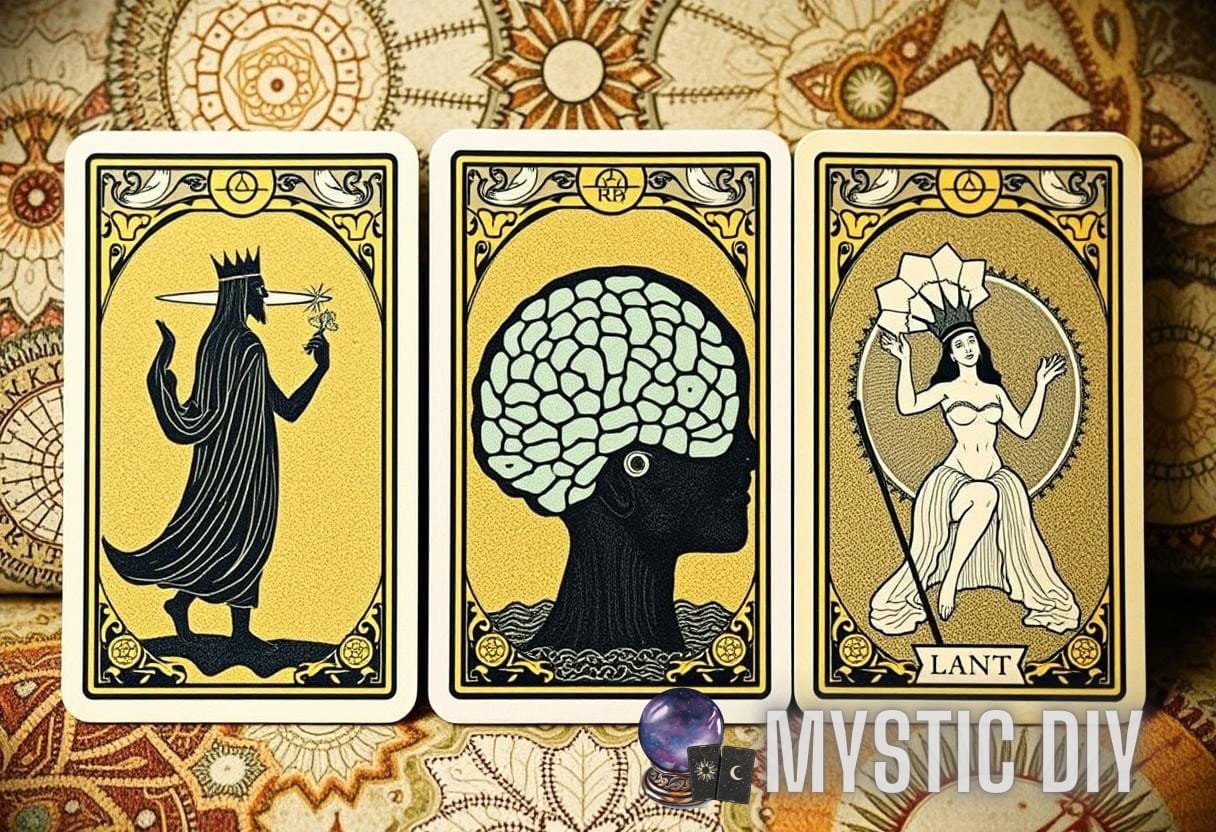Introduction
If you have ever been fascinated by the mystical world and want to delve deeper into understanding tarot cards, you’ve come to the right place. Tarot cards have been used for centuries as a tool for divination and self-reflection. Whether you’re a complete beginner or have some experience with tarot, this guide will help you unlock the secrets of the major and minor arcana. By the end of this article, you’ll have a solid foundation in tarot basics and be ready to embark on your tarot journey.
What is Tarot?
Tarot is a deck of 78 cards that are steeped in symbolism and imagery. The deck is divided into two categories: the major arcana and the minor arcana. Each card in the deck carries its own meaning and can be interpreted in various ways, depending on the question or situation being addressed. Tarot readings can provide guidance, insight, and clarity for those seeking answers to their questions or looking for guidance in life.
Major Arcana
The major arcana is made up of 22 cards and represents significant life events, major life lessons, and archetypal energies. These cards are considered the most powerful and important in the tarot deck. Each card in the major arcana has its own unique symbolism and represents a different aspect of the human experience.
Some of the key cards in the major arcana include:
- The Fool: Represents new beginnings, spontaneity, and taking risks.
- The Magician: Symbolizes manifestation, personal power, and creativity.
- The High Priestess: Represents intuition, inner wisdom, and the subconscious mind.
- The Empress: Symbolizes abundance, nurturing energy, and fertility.
- The Emperor: Represents authority, structure, and control.
- The Hierophant: Symbolizes tradition, spirituality, and conformity.
- The Lovers: Represents love, relationships, and choices.
- The Chariot: Symbolizes willpower, determination, and victory.
- Strength: Represents inner strength, resilience, and courage.
- The Hermit: Symbolizes introspection, solitude, and self-discovery.
- Wheel of Fortune: Represents fate, cycles, and change.
- Justice: Symbolizes fairness, balance, and karma.
- The Hanged Man: Represents surrender, letting go, and seeing things from a different perspective.
- Death: Symbolizes transformation, endings, and new beginnings.
- Temperance: Represents balance, moderation, and harmony.
- The Devil: Symbolizes temptation, materialism, and addiction.
- The Tower: Represents upheaval, sudden change, and destruction.
- The Star: Symbolizes hope, inspiration, and renewal.
- The Moon: Represents intuition, dreams, and the subconscious mind.
- The Sun: Symbolizes joy, success, and vitality.
- Judgement: Represents self-evaluation, awakening, and rebirth.
- The World: Symbolizes completion, fulfillment, and integration.
To gain a deeper understanding of the major arcana, check out this article that provides detailed explanations and interpretations of each card in the major arcana.
Each card in the major arcana tells a story and represents a stage in the journey of life. When these cards appear in a tarot reading, they indicate significant events or lessons that are currently influencing the querent’s life. The major arcana cards encourage introspection, self-reflection, and personal growth.
Minor Arcana
The minor arcana is comprised of 56 cards and is divided into four suits: cups, wands, swords, and pentacles. Each suit represents a different aspect of life and carries its own set of meanings and characteristics.
- Cups: The suit of cups represents emotions, love, relationships, and intuition.
- Wands: The suit of wands represents creativity, inspiration, passion, and energy.
- Swords: The suit of swords represents intellect, communication, conflict, and challenges.
- Pentacles: The suit of pentacles represents abundance, wealth, practicality, and material possessions.
Each suit contains cards numbered from Ace to Ten, as well as four court cards: Page, Knight, Queen, and King. The numbered cards represent different stages or levels within the suit, while the court cards represent individuals or personalities associated with that suit.
The minor arcana cards provide more specific insights into everyday situations and experiences. They can highlight areas of focus, challenges, or opportunities that may arise in the querent’s life. Understanding the meanings and interpretations of the minor arcana cards is essential for a comprehensive tarot reading.

If you’re interested in delving deeper into the meanings and interpretations of the minor arcana, you can find more information in this article that explores each card in the minor arcana in detail.
How to Read Tarot Cards
Reading tarot cards is a combination of intuition, symbolism, and interpretation. Here are the steps to read tarot cards effectively:
1. Set the Scene
Find a quiet and comfortable space where you can focus on your reading. It’s helpful to create a sacred space by lighting candles, burning incense, or playing calming music.
2. Clear Your Mind
Take a few minutes to clear your mind and center yourself. You can do this through meditation, deep breathing, or any other relaxation technique that works for you. This will help you establish a clear connection with the cards and your intuition.
3. Shuffle the Cards
Shuffle the tarot cards while thinking about the question or situation you want guidance on. This helps to infuse your energy into the cards and create a connection between you and the deck. Trust your intuition and shuffle the cards for as long as you feel necessary.
4. Choose a Spread
There are several different tarot spreads to choose from, depending on the type of question or situation you want to address. Some common spreads include the Celtic Cross, the Three-Card Spread, and the Past-Present-Future Spread. Choose a spread that resonates with you and lay the cards out accordingly.
5. Interpret the Cards
Once you have laid out the cards, begin interpreting them one by one. Take into account the symbolism, imagery, and position of each card within the spread. Pay attention to your intuition and any impressions or feelings that arise as you look at the cards. Use the guidebook that comes with your tarot deck or refer to trusted sources for interpretation if needed.
6. Trust Your Intuition
While interpretation is important, it’s essential to trust your intuition and personal connection to the cards. Your intuition will provide valuable insights and additional layers of meaning that may not be found in any guidebook. Trust yourself and your abilities to connect with the wisdom of the tarot.

7. Reflect and Take Action
Once you have interpreted the cards, take some time to reflect on the messages and insights they have provided. Consider how these messages relate to your question or situation and what actions you can take to navigate challenges or embrace opportunities. Remember that tarot readings are not set in stone and serve as guidance and support for your journey.
Frequently Asked Questions
1. Can anyone read tarot cards?
Yes, anyone can read tarot cards. However, it takes practice, dedication, and a willingness to learn and develop your intuition. Tarot reading is a skill that can be honed over time.
2. Do you have to be psychic to read tarot cards?
No, you do not have to be psychic to read tarot cards. While some readers may have natural psychic abilities, tarot can also be read using intuition, symbolism, and a deep understanding of the cards.
3. How often should I read tarot cards?
There is no set rule for how often you should read tarot cards. Some people read cards daily, while others prefer to read them on special occasions or when they have specific questions or situations they want guidance on. It’s important to listen to your intuition and read the cards when it feels right for you.
4. Can tarot predict the future?
While tarot can provide insights and guidance, it is not meant to predict the future with certainty. The future is not set in stone, and our actions and choices can influence the outcome of any situation. Tarot readings are meant to offer guidance and support, helping us make informed decisions and navigate life’s challenges.
5. How can I choose the right tarot deck?
Choosing the right tarot deck is a personal preference. There are hundreds of different decks available, each with its own artwork, symbolism, and energy. Take your time to explore different decks and choose one that resonates with you and speaks to your intuition.
Conclusion
Understanding the major and minor arcana is a significant step towards mastering the art of tarot reading. The major arcana cards provide insights into significant life events and lessons, while the minor arcana cards offer guidance on everyday situations and experiences. By familiarizing yourself with the meanings and interpretations of each card, you can unlock the wisdom and symbolism of the tarot.
Remember that tarot reading is a journey of self-discovery and personal growth. Trust your intuition, have an open mind, and embrace the insights and guidance that the tarot can offer. Whether you use tarot cards for self-reflection, divination, or simply as a tool for inspiration, the tarot has the power to illuminate your path and provide clarity in times of uncertainty. Enjoy your tarot journey and may it bring you wisdom, guidance, and profound insights.



